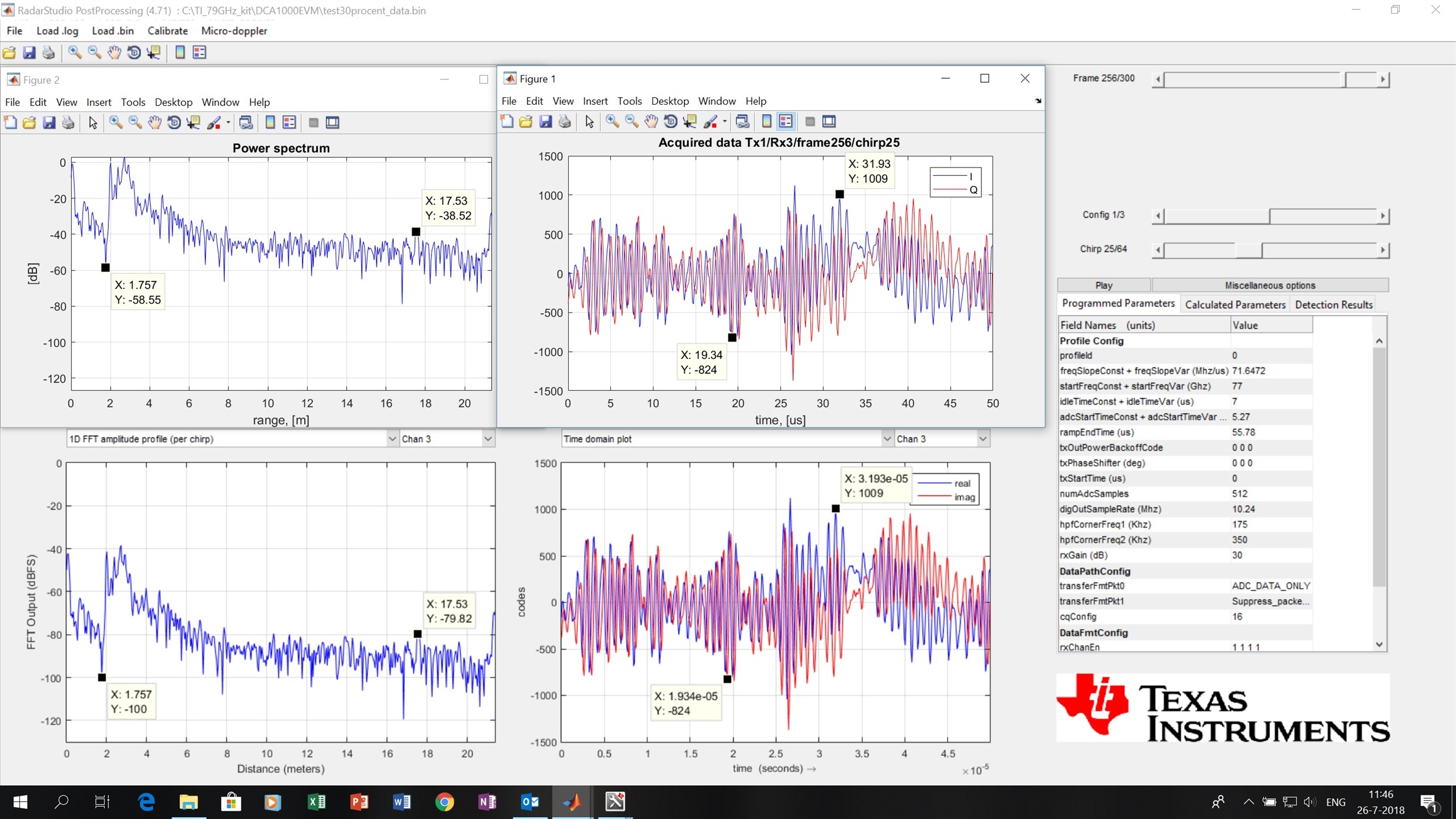Other Parts Discussed in Thread: DCA1000EVM, AWR1642BOOST, AWR1642, IWR1642, IWR1443
Dear experts,
my setup IWR1443Boost+DC1000EVM is up and running, now I can do long acquisiitons with infinite number of frames by simply pressing START and STOP buttons in mm-Wave Studio. Could you provide a MATLAB script that reads and parses raw data correctly? I see the data format has changed, and on top of that the UDP packets might be missing sometimes so it would be very helpful if you share a script-example to read the data. The data post-processing implemented in mm-Wave Studio at first corrects for missing packets, creates file "adc_data.bin" from "adc_data_Raw_0.bin", and then delivers a MATLAB Figure with plots. I need a script which allows me to do the same in MATLAB for a flexible number of "adc_data_Raw_N.bin".
Thanks and regards,
Timofey



